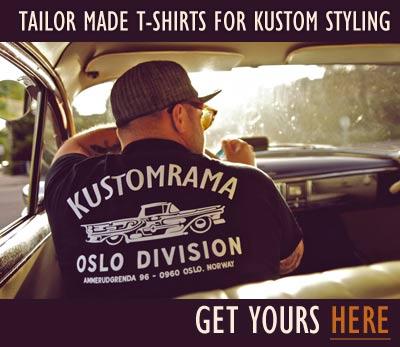Norm Crum
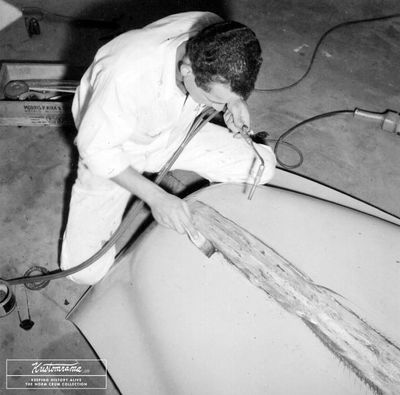
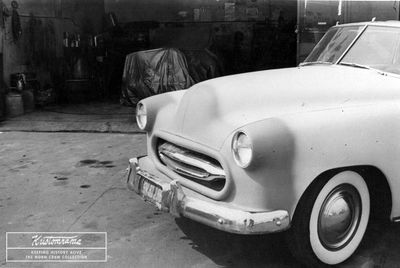
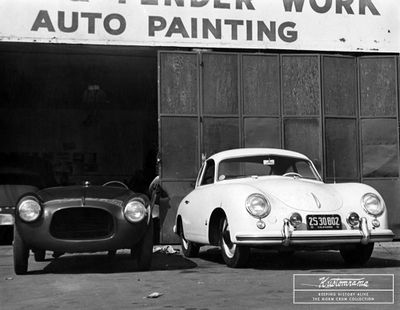
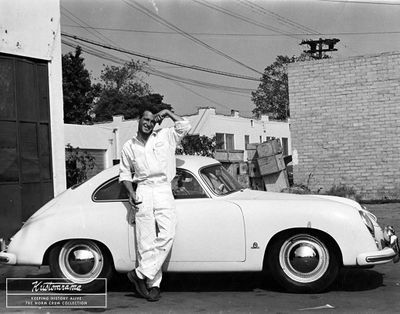

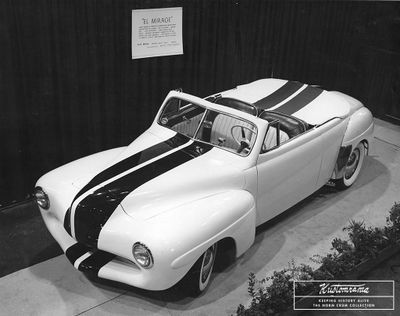
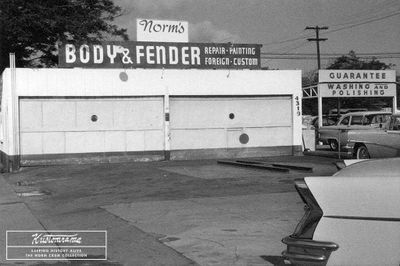
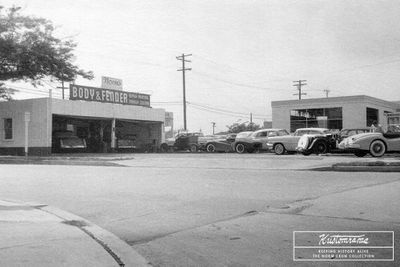
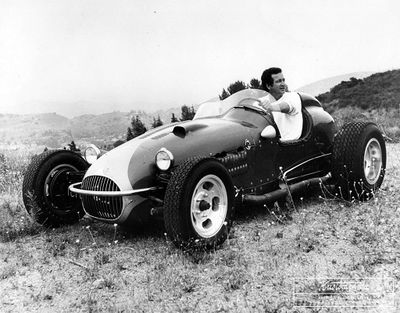


Norman Louis Crum is an American bodyman, hot rodder, and custom car builder known for operating Norm's Auto Body in Hollywood and Burbank, California. A Korean War veteran, Norm has built and customized numerous cars since the early 1950s, earning recognition in publications such as Car Craft Magazine.
Contents
Early Life
Norm graduated from Fairfax High School at 18 years and 6 months old and wasted no time starting his career in the automotive world. In 1948, at the age of 19, he opened his first body shop in Hollywood, California. He worked long hours, often 14 to 16 hours a day, charging just 50 cents an hour in an effort to prove that even someone so young could deliver professional-quality work.[1]
Korean War Service
Between January 1951 and October 1952, Norm served in the U.S. Army during the Korean War. Upon returning home, he quickly resumed his bodywork career in Hollywood.[1]
First Shop
Norm’s first shop, listed as Norm's Auto Body, was located at 8175 Melrose Avenue, Hollywood, and was active by 1955, as confirmed by a feature in Car Craft August 1955. In that article, Norm was described as part of a husband-and-wife team, working alongside his wife, Norene Crum. While Norm handled the bodywork and painting, Norene contributed ideas for restyling and was considered very clever at coming up with styling goodies. The article mentioned that their current pet project at the time was a restyled Volkswagen, which featured innovations from both Norm and Norene.[2]
The article also stated that Norm’s bodywork experience dated back to when he was discharged from the Army after the World War II, according to Jin Kim, this was not correct, as Norm served in the U.S. Army during the Korean War, and not World War II. According to the article, upon returning, he went to work for a custom shop in Hollywood, where he specialized in sports car work before opening his own shop. With several years of experience under his belt, Norm turned his focus to custom car building and quickly earned a reputation for quality craftsmanship.[2]
The Pete Brock Fordillac
One of the most significant customs to pass through Norm's Auto Body was the 1946 Ford Convertible, later known as the Fordillac, owned by Pete Brock of Menlo Park, California. Pete, who would later gain fame as a designer for General Motors and Shelby American, bought the already radically customized Ford from a used car lot in San Francisco in the early 1950s. The car had been sectioned, channeled, chopped, and fitted with a Carson Top by earlier customizers Art Lellis and Jerry Moffatt at Olive Hill Garage in Los Angeles.[3]
While studying automotive design at Art Center College of Design in Los Angeles, Brock began developing new ideas for the car’s appearance. He brought it to Norm's Auto Body, then located at 8175 Melrose Avenue in Hollywood, to execute his design sketches. Norm Crum and his team carried out the second wave of modifications, including a unique front end constructed using a 1941 Hudson nose and twin 1950 Mercury grille shells, recessed license plate in the rear pan, push bar bumpers, and Austin-Healey taillights. The body was painted Arctic White with blue Cunningham-style racing stripes. It was powered by a 1954 Cadillac engine backed by a 1938 LaSalle transmission, giving the Fordillac its name.[3]
According to Norm, much of the later bodywork was done by Jimmy Burrell, who worked in Norm's shop before purchasing the car from Brock in 1956. Jimmy drove the Ford back to North Carolina, where it vanished from public view. Years later, Pete Brock reached out to Norm trying to locate the lost custom, but its whereabouts remain unknown to this day.[3]
The Fordillac’s influence extended beyond the custom car scene. Pete later recalled that the car's racing stripe design, inspired by Briggs Cunningham's Le Mans entries, later found its way onto the Mustang GT350s he helped design for Shelby American.[3]
The Second Shop – Burbank Era
In the mid-1950s, Norm relocated his operation to 4319 West Olive Avenue in Burbank, a location directly across from Warner Bros. Studios. This move is documented in Car Craft November 1956. The shop was rented from race car driver and Lotus dealer Jay Chamberlain, who also took Norm on dove hunting trips in Arizona in his private plane.[1]
Period photos show Norm using a temporary “Norm’s” sign on top of an older sign when he first opened the Olive Avenue location. Norm continued working out of this shop for several years before moving to what would become his long-term base of operations.
Von Dutch
Norm was a good friend of legendary pinstriper Von Dutch, and he told Jin thatVon Dutch would often stop by the shop to visit Norm and pinstripe cars he was working on for customers.[1]
Final Shop – 825 N Hollywood Way
In the mid-1960s, Norm moved to 825 N Hollywood Way in Burbank, where he established the final iteration of Norm's Auto Body. He stopped working there in late 1975. According to his personal accounting book, Norm began renting the space out to other parties starting that year. After leaving Los Angeles County at the end of 1975, Norm relocated to Orange County. By the late 1970s, he had settled near the beach in Newport, California.[1]
Although he stepped away from running a commercial shop in 1975, Norm continued working on cars privately. He is known to have maintained and restored several vehicles over the years, including a classic Mini Cooper he worked on as recently as 2017. In 2003, he had a 1932 Ford Phaeton street rod. According to Jin Kim, who in 2025 spoke with Norm several times a week, Norm remained active working on cars until his early 80s, and possibly supervised operations beyond that. He was known for being strong and healthy well into his 90s, having previously been a bodybuilder.[1]
Legacy and Preservation
In July of 2025, Norm was living in Burbank and, at nearly 96 years old, remained mentally sharp and full of stories from the golden era of California car culture. He had no surviving descendants but was generously sharing his life history with Jin Kim, who was documenting his legacy through interviews and photo scans.[1]
Norm's photo archives include rare images of his early shops, custom cars, motorcycles, and racing machines. Jin also provided access to Car Craft Magazine features and photographs for historical preservation. As more photos are scanned and stories recorded, Norm Crum's contributions to post-war custom car history continue to gain long-overdue recognition.
References
Did you enjoy this article?
Kustomrama is an encyclopedia dedicated to preserve, share and protect traditional hot rod and custom car history from all over the world.
- Help us keep history alive. For as little as 2.99 USD a month you can become a monthly supporter. Click here to learn more.
- Subscribe to our free newsletter and receive regular updates and stories from Kustomrama.
- Do you know someone who would enjoy this article? Click here to forward it.
Can you help us make this article better?
Please get in touch with us at mail@kustomrama.com if you have additional information or photos to share about Norm Crum.
This article was made possible by:
SunTec Auto Glass - Auto Glass Services on Vintage and Classic Cars
Finding a replacement windshield, back or side glass can be a difficult task when restoring your vintage or custom classic car. It doesn't have to be though now with auto glass specialist companies like www.suntecautoglass.com. They can source OEM or OEM-equivalent glass for older makes/models; which will ensure a proper fit every time. Check them out for more details!
Do you want to see your company here? Click here for more info about how you can advertise your business on Kustomrama.
